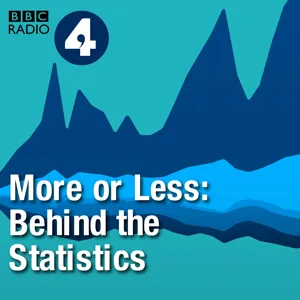Podcast Summary
The Number of Possible Chess Games is Beyond Human Comprehension: The number of possible chess games is estimated to be a vast, unfathomable number, far beyond the reach of human comprehension or imagination.
The number of possible ways to play a game of chess is estimated to be a vast number, approximately 10 to the power of 120. This figure is beyond human comprehension and surpasses the number of atoms in the observable universe. This intriguing fact was brought to our attention by a listener who had come across it in the novel "The Midnight Library" by Matt Haig. We consulted mathematician Dr. James Grime to help us understand the mathematics behind this claim. Chess is a complex game with a vast number of possible moves and combinations. The exact number is calculated using the number of possible positions on the board, which is 8x8 = 64, multiplied by the number of possible moves for each piece in its first move, and then raised to the power of the total number of moves in the game, assuming perfect play from both players. The result is an unfathomably large number, far beyond the reach of our current understanding and imagination. This illustrates the depth and complexity of even seemingly simple games, and the vastness of the mathematical world that surrounds us.
Claude Shannon's Estimation of Chess Games' Complexity: Claude Shannon estimated the number of possible chess games to be a massive figure, demonstrating the game's intricacy and depth, inspiring advancements in computer science.
Claude Shannon, a pioneer in computer science, attempted to estimate the number of possible chess games by considering a game lasting approximately 80 moves and assuming 30 possible choices for each move. This results in the massive figure of 10 to the power of 120 possible games, which is a testament to the complexity and depth of chess. This estimation by Shannon is not an attempt to calculate every possible chess game, but rather an illustration of the vast number of possibilities in the game. Shannon's work demonstrates the intricacy and depth of chess, and his approach to programming a computer to play the game was a significant step in the development of computer science.
The Complexity of Chess and the Shannon Number vs. The Number of Atoms in the Observable Universe: Alan Turing and Claude Shannon recognized the immense complexity of creating a perfect chess-playing machine, with the Shannon number exceeding the capabilities of computers at the time. The observable universe's number of atoms is much larger, highlighting the limitations of calculating or observing complexity.
Alan Turing and Claude Shannon recognized the immense complexity of creating a computer that could play a perfect game of chess. Shannon calculated that the number of possible moves in an 80-move game was beyond the capabilities of a machine operating at the time. This number, known as Shannon number, is much smaller than the number of atoms in the observable universe, which is a finite space as far as we can see. Astronomer Royal for Scotland, Katharine Haymonds, explains that the observable universe is the part of the universe we can observe and study, and its edge is marked by the heat left over from the Big Bang. The Shannon number and the number of atoms in the observable universe illustrate the vastness of complexity in different fields, showcasing the limitations of what we can calculate or observe.
The potential number of chess games outnumbers the atoms in the universe: The universe's vastness is impressive, but the potential number of chess games is even greater due to exponential growth
The universe contains a vast number of atoms, with estimates ranging from 5 x 10 to the 79 atoms to 7 x 10 to the power of 79 atoms. However, even this enormous number pales in comparison to the potential number of possible chess games, which is much larger due to the power of exponentials. For instance, the Shannon number, which represents the number of possible unique chess games, is 10 to the power of 120. Although many of these games may be strategically nonsensical, the sheer volume of possibilities is a testament to the power of exponential growth. The universe's vastness and the number of atoms it contains are truly impressive, but they are dwarfed by the potential number of chess games that could be played.
Exploring the Variety of Services Offered by 1800flowers.com and UnitedHealthcare: 1800flowers.com offers more than just gifting services, focusing on love and care in every product and service. UnitedHealthcare provides flexible short-term insurance plans for various durations.
The number of possibilities can grow extremely large when multiplied together. This was discussed during the podcast episode. For those with numerical queries, they can reach out to the BBC team. Additionally, 1800flowers.com is more than just a platform for gifting on birthdays, anniversaries, or "just because." The company prides itself on the love and care put into every product and service, from their farmers and bakers to their florists and makers. The goal is to deliver smiles to customers and their loved ones. To learn more about 1800flowers.com, visit their website at 1800flowers.com/acast. An interesting fact shared during the podcast was that a crocodile cannot extend its tongue. Lastly, UnitedHealthcare offers short-term insurance plans underwritten by Golden Rule Insurance Company, providing flexible and budget-friendly coverage for health insurance for durations as short as a month or less in some states. For more information, visit uhone.com.






